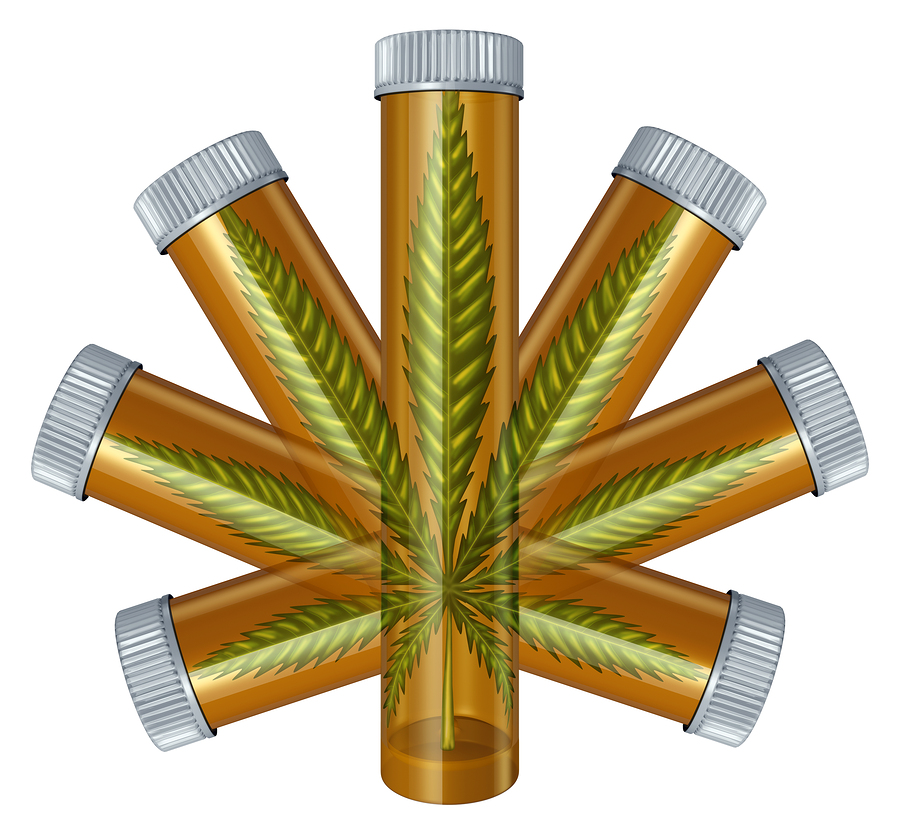Despite a societal shift towards the acceptance of marijuana, as evidenced by several newly passed state laws, political uncertainty as well as roadblocks at local, state and federal levels could derail its legal use.
Last month, California, Massachusetts, Nevada and Maine passed recreational marijuana laws while Arkansas, Florida, Montana and North Dakota approved medical marijuana legislation.
According to a recent Coventry webinar that offered a post-election clinical and regulatory update on medical marijuana, the once grassroots movement is now considered big business.
Nikki Wilson, director of Pharmacy Product Development, opened the webinar by offering a clinical picture of marijuana. She explained that the human body has its own natural cannabinoid system, similar to cannabis, that binds to receptors in the nervous system, organs, glands, connective tissues and in immune and blood-forming cells.
“These are playing a role today in our body,” said Wilson.
Among its benefits cannabis can improve sleep, reduce muscle spasms and relieve pain. As a result, chronic pain, arthritis, dystonia and other maladies could benefit from marijuana therapy.
Plant derived cannabinoids – more than 80 have been identified – mimic what the body produces. According to Wilson, there have been several small-scale clinical research studies on marijuana. THC is the most studied aspect of cannabinoids, she said. A barrier to research is the fact that it is considered an illegal substance at the federal level, though the DEA is expanding the number of registered marijuana manufacturers and some states have passed laws allowing medical marijuana research.
Evidence reveals insufficient evidence supporting its use for chronic long term pain, Wilson said. In addition, there is mixed evidence relating to its use by young people. Some studies suggest that marijuana use could reduce workplace productivity and impaired performance on neuropsychological tests.
Drug delivery methods vary, Wilson said, noting that marijuana can be vaporized, smoked or ingested. It can also be applied topically with a cream. Marijuana is also available via capsule and liquid form.
According to Wilson, there are currently comprehensive medical marijuana programs in 28 states and 17 states allow limited access to marijuana products.
Because marijuana remains illegal at the federal level, patients don’t get prescriptions for it. A doctor has to recommend it as a treatment in order for a patient to be able to apply for state certification, at which time he or she will receive a marijuana registry identification card in order to buy it at a dispensary, Wilson explained.
Wilson offered an explanation on the differences between medical versus recreational use of marijuana:
Medical Use: Medical marijuana refers to the use of cannabis or marijuana, including constituents of cannabis, THC, and other cannabinoids, as a physician-recommended form of medicine or herbal therapy.
Recreational Use: Recreational drug refers to any substance with pharmacologic effects that is taken voluntarily not for medical purposes, but for personal pleasure or satisfaction.
Post-election Impact on Marijuana Reform
Since the elections, many states have approved marijuana for medical and recreational use, Lisa Ann Forsythe, director of Workers’ Comp Government Relations, explained.
[graphiq id=”e0Cg2szCs73″ title=”Legal Status of Recreational & Medical Marijuana Use” width=”600″ height=”535″ url=”https://w.graphiq.com/w/e0Cg2szCs73″ link=”https://www.graphiq.com/vlp/e0Cg2szCs73″ link_text=”Graphiq” ]
Younger people are driving the marijuana movement, Forsythe said. Democrats favor legalizing marijuana 2 to 1 versus Republicans.
Marijuana is big business and no longer a grassroots movement, she added, noting that $40 million was spent by both sides in November ballot measures. Most cash, $29 million, flowed on the pro-legalization side of the matter. In California, $20 million was raised by legalization supporters, she said. Individual donors and drug policy advocacy groups provided most of the the financial support.
Forsythe explained that big pharma, concerned with the negative impact of profits, is opposed to legalizing marijuana. According to one study conducted by Bradford and Bradford, fewer pain doses were recorded in states where medical marijuana was allowed.
Emerging Trends
The new administration could impact how states handle medical and recreational marijuana laws, Forsythe explained. Marijuana advocates are most concerned about Jeff Sessions, the nominee for Attorney General who is opposed to medical and recreational marijuana as well as Tom Price, nominee for Health and Human Services Secretary and one of the most consistent anti-marijuana opponents in Congress.
In addition, Forsythe said there are other potential federal enforcement mechanisms, like
pre-emptive lawsuits that could be filed by the Department of Justice, dispensary raids conducted by the Drug Enforcement Administration and RICO suits filed by anti-marijuana groups against businesses doing business with a dispensary. Forsythe said she has seen civil lawsuits filed against accountants and landlords in order to shut down marijuana-related operations.
Marijuana dispensaries face financial hurdles as well. Dispensaries are not permitted to take tax reductions and banks still won’t take cash from dispensaries. As a result, dispensaries continue to operate as cash only businesses, Forsythe explained.
Roadblocks at the state and local level continue. These include the slow implementation of the compassionate use act, administrative burdens, zoning ordinances and opting out by cities within states that allow medical marijuana.
Though traction is slowly gaining in the adoption of medical marijuana as a compensable benefit, the shifting political landscape could affect this. In addition, Forsythe said conflicts with drug-free workplace policies will continue. More importantly, the overall view of marijuana as a recreational drug could impact its acceptability as compensable medicine.
Was this article valuable?
Here are more articles you may enjoy.


 Truckers Who Fail English Tests Get Pulled Off Roads in Trump Crackdown
Truckers Who Fail English Tests Get Pulled Off Roads in Trump Crackdown  Trump Sues BBC for $10 Billion Over Documentary Edit
Trump Sues BBC for $10 Billion Over Documentary Edit  NYT Asks Judge to Dismiss Trump’s ‘Implausible’ Defamation Suit
NYT Asks Judge to Dismiss Trump’s ‘Implausible’ Defamation Suit  LA Fires Push Insurers’ 2025 Disaster Losses to $107 Billion
LA Fires Push Insurers’ 2025 Disaster Losses to $107 Billion 